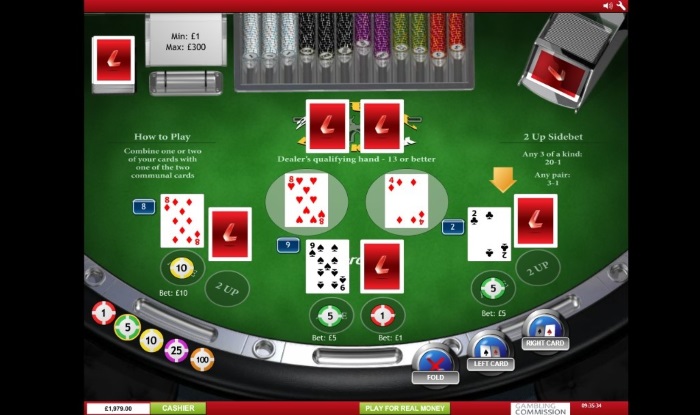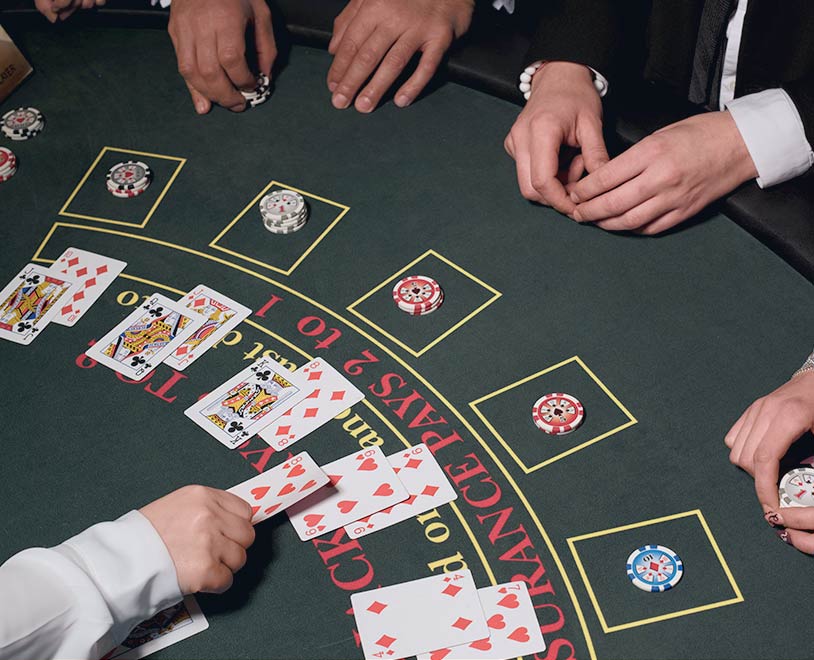Blackjack Poker Side Bet
- Blackjack With Poker Side Bet
- Blackjack Poker Side Bet Odds
- Blackjack 21 With Perfect Pair And Poker Side Bet
In the 21+3 blackjack side bet you bet on whether the first two cards of your hand and the dealer’s face-up card combine to make one of the three-card poker hands below: Flush – Three cards in the. Blackjack is famous for the low house edge, which can go below 0.50% when the game is played according to the optimal strategy. If you place a side bet, you can put your balance at danger since the house edge is much higher. For instance, the 21+3 side comes with a 3.2386% house margin. Side bets at blackjack are offered for two basic reasons: to add a little excitement for players who want more out of the game than trying to grind out a profit one bet at a time, and to increase action to generate more profit for the house. A blackjack side bet allows the player to make an additional wager in addition to the bet made on the blackjack hand. Whereas the minimum bet on a blackjack hand in a live casino can be as little as $1 online or $5 in a live casino, the side bet can always be played for a minimum of $1. Blackjack side bets are additional bets placed during a standard game of Blackjack. They involve predicting which cards the player, and sometimes the dealer, will receive.
When discussing some of the side bets in blackjack, you’ll notice that I use terms like “expected return” and “house edge.” Here’s an explanation of those concepts.

The expected return is the amount of money that you can expect to win or lose (in the long run) from each wager. For example, if you’re placing an even-money $1 bet, and your chances are 40% fora win and 60% for a loss. This would give you the following: $0.40 – $0.60 = -$0.20. The negative sign in front of the total means that for every dollar wagered you can expect to lose $0.20 (onaverage, over a long period of time—in the short run, anything can happen).
Here’s an example where you have multiple options for winning. Let’s say that you’re betting $1 on a slot machine, and you have a 20% chance of winning $4, a 25% chance of winning $3, and a 55%chance of losing. Here’s how the expected return would be calculated:
20% x $4 = $0.80

25% x $3 = $0.75
55% x -$1 = -$0.55
$0.80 + $0.75 – $0.55 = $1
In this example, you could expect to win $1 per spin over the long term. Of course, no sane casino ever offers a slot machine game with a positive return.
The house edge, meanwhile, is the ratio of the average loss to the initial bet. Expressed as a percentage, this number demonstrates the subtle way in which casino games bleed aplayer dry.
For example, a 5% house edge means you can expect to lose $5 for every $100 wagered—or $0.05 for every $1. This might not sound like a lot, but it gives the casino a financial advantage over theplayer and allows for a steady accumulation of profit.

Game designers and casinos carefully calculate the expected return and house edge before putting a game on the casino floor. The end result is that the house almost always has an advantage overthe player, which explains why the major casinos rake in obscene amounts of money on an annual basis.
Overview of 21+3 Blackjack
The 21+3 side bet is optional, and its size does not need to be the same as the main bet. In order to play the side-bet, you need to participate in the main hand.
Placing a bet in the 21+3 square is all you need to do to participate. As soon as the deal is made, and before any player takes any actions the 2 player cards and the dealer’s up-card (or only card in European Blackjack) are compared to the pay table.
There are several variations of 21+3 payouts, the most simple pays from a ‘flush +pair’ and up, with 9-to-1 payouts in each case. When pairs are also included, this is hit more often, so the prizes are lowered to reflect this. There are 3-to-1 for all hands (pair, flush, straight, trips and straight flush) or there are staggered pay tables.
When the prizes are staggered, a straight flush or better can win significant money. Here is an example:
- Flush – Pays 5:1
- Straight – Pays 10:1
- Straight Flush – Pays 35:1
- Three of a Kind – Pays 33:1
- Suited 3 of a Kind – 100:1
Keep in mind that depending on the pay table, the house edge can get as high as 13% for this side bet. You can find examples of games (depending on the number of decks in use) where this is around 2.78% instead.
Strategy for 21+3 Blackjack
It goes without saying that knowing the correct basic strategy of the base game is a prerequisite here. Without this you are just handing money to the house.
Blackjack With Poker Side Bet
Your main ‘strategy’ decision over the long run with the 21+3 side-bet is whether to play or not. The house edge is bigger than in most base games. If you know this, then you get to decide whether the added interest and entertainment (and chance of a windfall win) are worth it to you. If the extra engagement from the 21+3 bet works for you – then you can simply add a little to your bankroll to cover this.

Card counters can beat this game by memorizing the suits as they are dealt. It is possible on some deals to find one suit over-represented as the shoe gets smaller – turning the edge positive for players. The expected hourly rate for this is very low compared to other forms of counting. Online the deck is shuffled after each hand, making card counting impossible.
Pros and Cons of 21+3 Blackjack
Blackjack Poker Side Bet Odds
Adding a poker style hand to blackjack makes for an interesting variation – though I do wonder whether ‘purists’ in either discipline would approve! Depending on which of the pay tables you use there is the chance of a 9-to-1 or even bigger windfall. That elusive suited 3-of-a-kind (paying 100-to-1) would certainly be memorable.
Blackjack 21 With Perfect Pair And Poker Side Bet
Whether you participate depends on your attitude towards side-bets in general. Some players like these bets, and are happy to pay the extra house-edge for the chance of the occasional big win. Others scorn these bets as long-term losers.